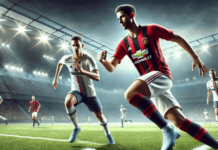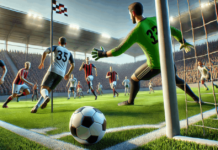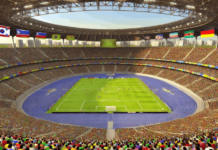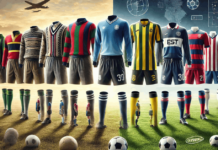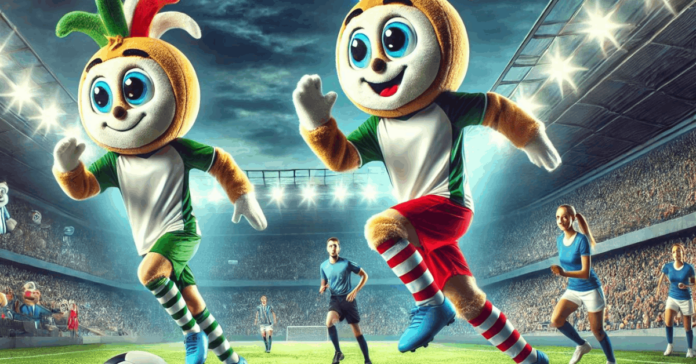
Soccer mascots add a unique layer of fun and personality to the game, entertaining fans of all ages. This article explores the funniest and most iconic characters that have made their mark on the field.
You’ll discover how they enhance the fan experience while representing their teams. Let’s look at the mascots that make soccer even more memorable.
The Purpose of Mascots in Soccer
They add excitement to soccer games. They engage fans and represent the team.
Why Are They Important?
Mascots boost team spirit and keep the crowd entertained. They are visual symbols that bring energy to the match. Their actions make the game more fun for fans of all ages, adding to the overall experience.
How Mascots Enhance Fan Engagement?
They interact with fans, creating a strong connection with the team. Their playful gestures keep the audience entertained, especially young fans. By increasing engagement, mascots make fans feel part of the action, deepening fan loyalty.
Representing the Club’s Identity and Values
Through their design and actions, mascots reflect the club’s identity. They wear team colors and symbolize the club’s values, strengthening the team’s and its fans’ bond. Fans recognize mascots as part of the club’s culture.
Creating a Family-Friendly Atmosphere
They make the stadium more welcoming for families. Their antics keep kids entertained, adding a fun element to the game. This encourages families to attend, creating a positive atmosphere. It helps build future generations of fans.
How Mascots Have Evolved Over the Years?
They have become more modern and interactive. Once simple costumes, they now include technology and social media interaction. Their evolution has made them key figures on and off the field. They’re now part of the entertainment.
Funniest Characters in Soccer
Some mascots stand out for their humor and playful antics. They entertain fans with their unique styles and unexpected performances.
- Gunnersaurus Rex (Arsenal): Known for its amusing dinosaur costume and friendly demeanor, this mascot has become a favorite among fans for its long-standing presence at Arsenal games. Its funny dances and interactions with fans make it a true crowd-pleaser.
- Boiler Man (West Bromwich Albion): This mascot surprised everyone with its comical, industrial appearance. Dressed as a boiler, its unexpected design has created many laughs on and off the field.
- Harry the Hornet (Watford): Famous for taunting rival players, Harry brings humor through his cheeky antics. His boldness during matches makes him a memorable part of the fan experience.
- Kingston the Lion (Coventry City): Kingston keeps fans entertained with his funny gestures and light-hearted performances. His playful approach adds an extra level of fun to the game.
Most Famous Characters in Soccer
Some mascots have earned iconic status, becoming symbols of their clubs and recognized far beyond the stadium.
- Fred the Red (Manchester United): Fred is a cultural icon at Manchester United, representing the club’s spirit for decades. His strong connection with fans and continuous presence make him one of the most recognizable in soccer.
- Bernie the Saint Bernard (Southampton) symbolizes the club’s heritage. He is known for promoting community and family values, and his enduring legacy continues to resonate with fans.
- Jay (Crystal Palace): Jay plays a key role in boosting team spirit at games. His energetic presence and colorful design have made him a long-lasting favorite.
- Wolfie (Wolverhampton Wanderers): Wolfie is iconic for representing the team. His popularity extends beyond matchdays, becoming essential to the club’s identity.
Rivalries and Controversies
Many memorable moments have involved mascots and their interactions with rivals. These events add a layer of fun and tension to the game.
Famous Mascot Interactions with Rival Players
Some mascots have gone beyond entertaining fans by engaging with rival players. For example, Harry the Hornet is famous for taunting a player during a game, creating comedic moments that fans still talk about.
These interactions can add tension, but they also bring humor to the matches. It’s all part of the playful rivalry that makes games more entertaining.
Tension Between Mascots and Referees
They sometimes joke around with referees, creating light-hearted tension during matches. In some instances, mascots mimic or exaggerate referee decisions, which gets a laugh from the crowd.
Though it’s all in good fun, these actions show how mascots can influence the mood of the game. They provide a break from soccer’s serious tone.
Influence on Fan Experience
They play a big role in boosting the overall fan experience, making games more interactive and enjoyable for everyone.
How Mascots Increase Fan Participation?
They interact directly with fans, encouraging more participation through fun activities like cheering and dancing. Their presence creates a sense of community among fans, uniting them behind their team.
They help bring out the excitement of being part of the crowd. This interaction keeps fans engaged throughout the match.
Making Games Fun for Younger Audiences
Mascots add a playful element that keeps younger fans entertained. Their funny performances and costumes appeal to children, making the game more enjoyable for families.
Kids often look forward to these antics as much as the game itself. This helps grow the next generation of supporters.
Boosting Merchandise Sales
They are also a big part of a club’s merchandise strategy. Their recognizable characters appear on toys, clothing, and other merchandise that fans love to buy.
These products add another revenue stream for clubs while also promoting their brand. Fans often see mascots as extensions of the team itself.
How Mascot Designs Have Changed?
Their designs have evolved from simple, basic costumes to more complex and visually striking characters. This change has added a modern touch to the experience.
From Simple to Modern Designs
In the past, designs were much simpler, focusing on basic costumes and minimal details. Today, they have become more elaborate and professional, with better materials and intricate features.
These changes have improved their visual appeal. Modern designs make them more memorable and engaging.
Technology’s Role in Modern Mascots
Advances in technology have brought new elements to costumes, including animatronics and LED screens. These features add a dynamic aspect to their performance, allowing for more interactive and engaging appearances.
Technology has made their movements more lifelike. This makes them more fun to watch during games.
Their Role Outside the Field
They do more than entertain at games. They also have a positive impact on communities and culture outside the stadium.
Involvement in Charity and Social Media
They often participate in charity events and school programs, using their fun image to promote good causes. Their presence at community events strengthens the connection between fans and the club.
Many now also have active social media accounts, where they engage with fans directly. This keeps them relevant even when there’s no match.
Cultural Impact Beyond the Game
These characters have a big influence on soccer culture. They represent the team and create a lasting connection with fans.
Their impact goes beyond just game days as they continue to engage with the public in various ways. This makes them more than just a symbol of entertainment.
Final Thoughts: Funniest and Most Iconic Soccer Mascots
Soccer mascots play a vital role in enhancing the fan experience, providing entertainment, and representing their teams. From the funniest characters to the most iconic symbols, they bring unique energy to the sport.
Whether through humorous antics or cultural significance, these figures leave a lasting impact on fans of all ages. Ultimately, soccer mascots add an important layer to the overall excitement of the game, making each match more memorable.

